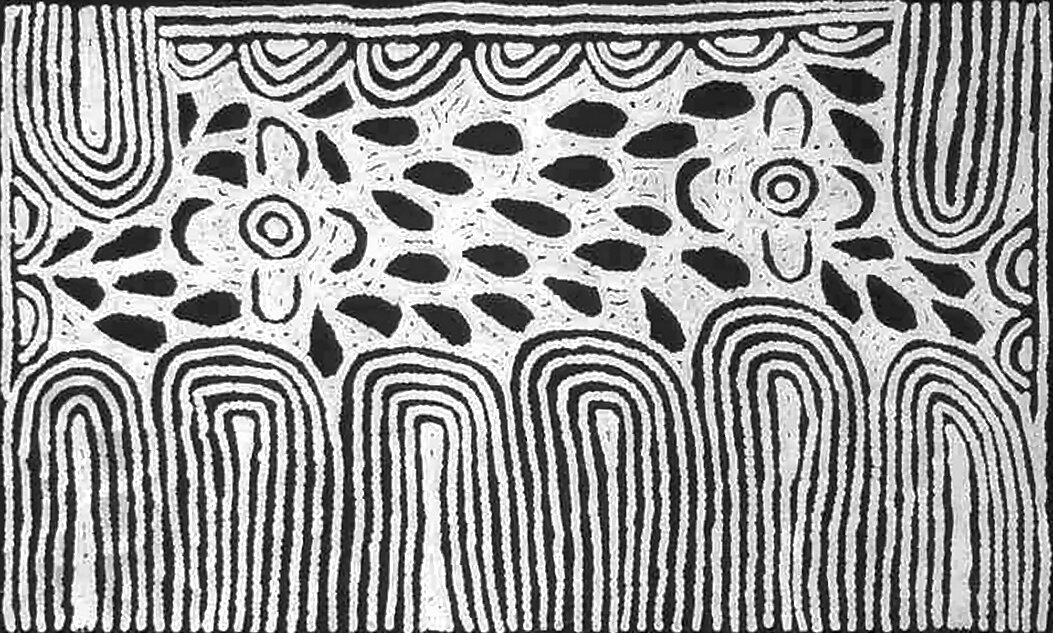Minyma Tingari - Ceremony for Bush Apples, 2001 by Barbara Napangarti Reid 91x152cm #6239BR
"Minyma Tingari - Ceremony for Bush Apples, 2001" by Barbara Napangarti Reid beautifully illustrates aspects of the secret and sacred ‘Tingari Cycle,’ a spiritual blend of story, song, and ceremony. This painting narrates the journeys of Tingari ancestors who traveled vast stretches of the country, performing rituals that shaped the land formations of specific sites.
In this work, Barbara depicts Tingari women, represented by U shapes collecting pintalypa, a native bush-apple depicted by the black ovals. Pintalypa is a small green fruit with poisonous black seeds; only the green exterior is edible. Stratified, elongated U shapes symbolise puli or rock formations and tali (sandhills), which are also reflected in the ceremonial body paint worn by Ngaanyatjarra women during these ceremonies.
The iconography represents the body paint used by Ngaanyatjarra women during Tingari ceremonies, highlighting the importance of these rituals in maintaining cultural continuity. These elements play a crucial role in the investiture teachings for post-initiatory youth and explain contemporary customs.
The natural environment of Tjukurla features expansive sandhills, rockholes with water, and various bush foods. The concentric circles in the painting depict ceremonial sites, while the linear patterned U shapes represent windbreaks protecting the women from the harsh desert winds.
Barbara’s use of traditional symbols and luminous colours creates a strong but serene presence in "Minyma Tingari - Ceremony for Bush Apples, 2001," capturing the Tingari stories and their connection to the land. This painting is a vital cultural artifact, preserving and honouring the sacred narratives and traditions of the Ngaanyatjarra people.
GALLERY GONDWANA
ABN: 75 009 652 046
All prices displayed in AUD, GST included.
Gallery Gondwana acknowledges the First Peoples of this land and recognises their continuous connection to culture, community and Country.
CONTACT US
+61 417 75 74 75
+61 417 27 44 31
roslyn@gallerygondwana.com.au
PO Box 3770, Alice Springs NT 0871 Australia
Vatu Sanctuary
Saturate yourself and be inspired by the power of Aboriginal art in a living gallery environment.

All Rights Reserved | Gallery Gondwana
